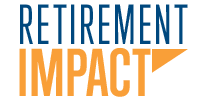Recently the EBSA division of the Department of Labor (DOL) released a proposal that was largely viewed as discouraging the use of Environmental, Social or Governance (ESG, or Socially Responsible Investing) factors as due diligence in ERISA based defined contribution retirement plans.
In the DOL’s proposal Secretary of Labor Eugene Scalia said “Private employer-sponsored retirement plans are not vehicles for furthering social goals or policy objectives that are not in the financial interest of the plan. Rather, ERISA plans should be managed with unwavering focus on a single, very important social goal: providing for the retirement security of American workers.”
How did we get here?
ESG investing has been a hot topic of late and more plan fiduciaries that we speak with are considering utilizing ESG considerations in their due diligence process. We feel that there is a place for ESG but selecting funds based on ESG factors must not be taken lightly. In recent years there have been several interpretive bulletins and one Field Assistance Bulletin (FAB 2018-01) outlining the DOL’s guidance around selecting and monitoring plan investments as they relate to ESG factors:
FAB 2018-01 consolidated past guidance that said that ERISA fiduciaries may not sacrifice investment returns or assume greater investment risks as a means of promoting collateral social policy goals.
- IB 2015-01[1]
- Fiduciaries can not sacrifice investment return or take additional risk for collateral Social Policy Goals
- Fiduciaries can use ESG as a tie-breaker for investment choice.
- Adding an ESG alternative to the lineup as an additional asset class is acceptable if it doesn’t forgo adding other non-ESG themed investment options to the platform.
- Nothing in the QDIA regulation suggests that fiduciaries should choose QDIAs based on collateral public policy goals.
- For example, the selection of a ESG-themed target date fund as a QDIA would not be prudent if the fund would provide a lower expected rate of return than available non-ESG alternative target date funds with commensurate degrees of risk, or if the fund would be riskier than non-ESG alternative available target date funds with commensurate rates of return.
- IB 2016-01[2]
- Investment Policy Statements are permitted but not required to include policies concerning the use of ESG factors to evaluate investments.
- If an IPS contains language for evaluating funds based on ESG factors, there is nothing stating that fiduciaries must always adhere to them.
- Plan fiduciaries should not incur substantial expenditure of plan assets to actively engage with management on environmental or social factors, either directly or through the plan’s investment managers.
DOL new proposed rules
The new DOL proposal goes further to add five core new additions to the regulations[3]:
- New regulatory text to codify the Department’s longstanding position that ERISA requires plan fiduciaries to select investments and investment courses of action based on financial considerations relevant to the risk-adjusted economic value of a particular investment or investment course of action.
- An express regulatory provision stating that compliance with the exclusive-purpose (i.e., loyalty) duty in ERISA section 404(a)(1)(A) prohibits fiduciaries from subordinating the interests of plan participants and beneficiaries in retirement income and financial benefits under the plan to non-pecuniary goals.
- A new provision that requires fiduciaries to consider other available investments to meet their prudence and loyalty duties under ERISA.
- The proposal acknowledges that ESG factors can be pecuniary factors, but only if they present economic risks or opportunities that qualified investment professionals would treat as material economic considerations under generally accepted investment theories. The proposal adds new regulatory text on required investment analysis and documentation requirements in the rare circumstances when fiduciaries are choosing among truly economically “indistinguishable” investments.
- A new provision on selecting designated investment alternatives for 401(k)-type plans. The proposal reiterates the Department’s view that the prudence and loyalty standards set forth in ERISA apply to a fiduciary’s selection of an investment alternative to be offered to plan participants and beneficiaries in an individual account plan (commonly referred to as a 401(k)-type plan). The proposal describes the requirements for selecting investment alternatives for such plans that purport to pursue one or more environmental, social, and corporate governance-oriented objectives in their investment mandates or that include such parameters in the fund name.
Exclusive Purpose Rule
It is important to always remember that ERISA requires that fiduciaries operate the plan for the exclusive purpose of providing benefits to participants and paying reasonable plan expenses. If a plan committee is going to use ESG as a criteria for it’s selection and monitoring of funds it is important to keep a few rules in mind:
- Your process must always start with a prudent review of performance, risk and cost factors to select suitable investment options.
- ESG factors that are pecuniary in nature can be taken into account to the extent that they present economic risks or opportunities that qualified investment professionals would treat as material economic considerations under generally accepted investment theories. ESG factors can not be weighted more heavily than non-ESG factors.
- ESG may be used as a tie-breaker in the event that two investments are “economically indistinguishable”.
- Keep in mind that the proposed regulation requires new investment analysis and documentation requirements in the rare instance when fiduciaries are choosing among truly economically indistinguishable investments.
- ESG criteria should not be a consideration in the selection of a QDIA investment.
Where do we go from here?
The new rule proposed by the EBSA is just that, a proposed rule. There is still a long way to go before it becomes a regulation and these issues tend to be political and can change under different administrations. However, a solid foundation of procedural prudence and keeping the focus on participants’ successful retirement outcomes can be achieved by thoughtful integration of ESG factors into your investment selection process. Remember to document your decisions and always ensure that first and foremost that the investment selection that you are making does not sacrifice investment return, increase costs or assume additional risk.
Have questions about your process relating to ESG in your retirement plan? Email Elazzari@401kimpact.com for an online consultation.
[1] Source: DOL, IB 2015-01, accessed July 9, 2020,
https://www.federalregister.gov/documents/2015/10/26/2015-27146/interpretive-bulletin-relating-to-the-fiduciary-standard-under-erisa-in-considering-economically,
[2] Source: DOL, IB 2016-01, accessed July 9, 2020.
https://www.dol.gov/sites/dolgov/files/legacy-files/ebsa/2016-31515.pdf
[3] Source: DOL, “U.S. Department of Labor Proposes New Investment Duties Rule,” accessed July 9, 2020,
This information is not intended as authoritative guidance or tax or legal advice. You should consult your attorney or tax advisor for guidance on your specific situation. In no way does advisor assure that, by using the information provided, plan sponsor will be in compliance with ERISA regulations. An Environmental, Social and Governance (ESG) fund’s policy could cause it to perform differently compared to funds that do not have such a policy
Related Posts
-
Your Mid-year 401(k) Plan Check-up and Tune-up As we round the corner to 2018, I…
-
No "One Size Fits All" Plan Retirement plans come in all shapes and sizes: DC…
-
Evaluating Your Fiduciary Process Believe it or not, an efficient retirement plan committee does not…










